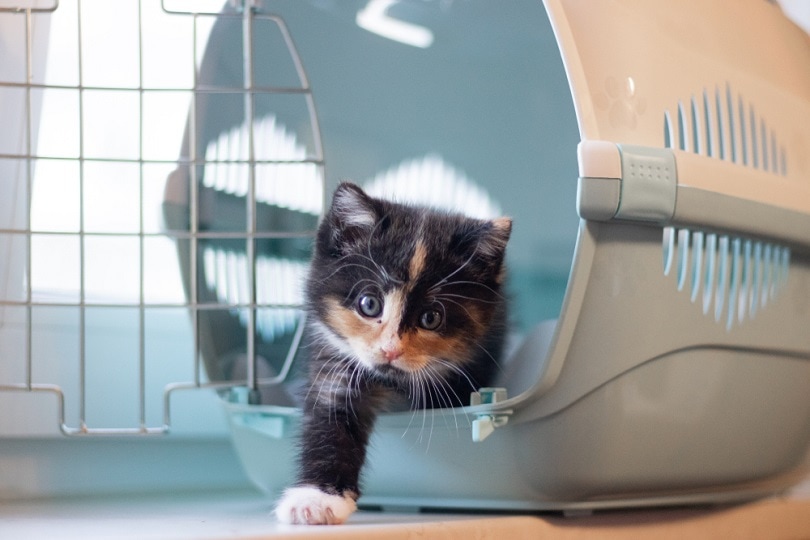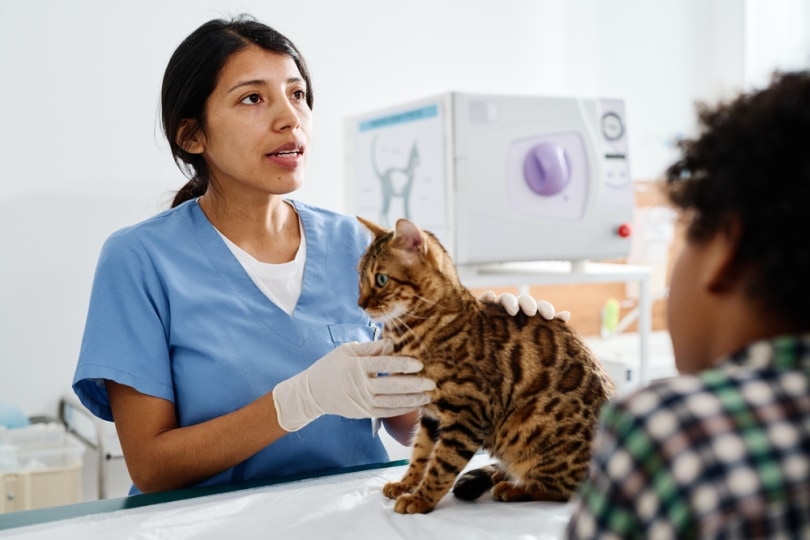
We can imagine the panic a pet owner must feel when they find their beloved cat unconscious and unresponsive. Time is of the essence, with seconds literally meaning the difference between life and death.
Performing cardiopulmonary resuscitation (CPR) on animals isn’t much different than with people. The difference lies with the necessary pattern of breaths and chest compressions.
We hope you’ll never need to use this information. However, it behooves every pet owner to know how to perform this life-saving procedure so that you can act swiftly in the event of an emergency. Your cat’s life may depend on it.
The 7 Things You Should Know Before Attempting CPR on a Cat
According to the Merck Veterinary Manual, up to 44% of animals survive a cardiac event when CPR is performed quickly and correctly. Unfortunately, less than 10% live to return home again. The procedure’s effectiveness and success depend on what caused your cat’s heart to stop in the first place. CPR is triage until your veterinarian can stabilize your pet for further investigation.
It’s worth mentioning that a traumatized animal is unpredictable and will likely scratch, bite, or fight to get away if it becomes conscious again. It’s imperative to stay alert to protect yourself from injury. After all, you’re not as much help to your cat if you get hurt.
1. Check for a Heartbeat and Breathing
Observe whether your pet’s chest is moving to indicate that it’s still breathing. You’re unlikely to detect a pulse through the cat’s fear and in your panic. Stick with the obvious indicator and take it from there.

2. Put Your Pet on Its Side
Lay your cat on its side on a solid surface like a table or desk. However, even the floor will work. Avoid putting it on a bed since it won’t allow you to get the adequate force behind the chest compressions. Contact a family member or friend to help you get your pet to the vet if you can.
3. Get Your Hands in Position
Place your hand on your cat’s side by the rib cage over the widest area of its chest. Put your other hand over it and lock your elbows. You can distribute the weight of your hands on both sides of the animal if it’s a kitten by putting your thumb on one and the rest of your fingers on the other.
4. Start Chest Compressions
You’ll start CPR with a rapid series of chest compressions to get the blood moving and oxygen transported throughout your pet’s body. The sequence may seem extreme, but a normal heart rate is between 140 and 220 beats per minute (bpm), which you’re trying to replicate with CPR. Initially, you’re shooting for 100 to 120 times a minute.
Start with 30 quick chest compressions. Depress its chest about an inch, allowing it to return to its full size in between compressions.
5. Give Your Cat Rescue Breaths
The pulmonary part of the procedure is the rescue breaths you’ll deliver from your mouth to your cat’s nose. Close its snout with one hand and cradle its head in the other. This positioning will ensure the most air gets into your pet. Give your kitty two strong breaths.
6. Continue the Cycle for 2 Minutes
Repeat the cycle of 30 chest compressions and two rescue breaths for at least 2 minutes or until your pet becomes conscious. That is the amount of time necessary to get to the optimal pressure within your cat’s body. If the heart starts pumping, it’ll be in the right zone to ensure continual circulation and respiration.
7. Transport Your Pet to Your Veterinarian or Emergency Vet Clinic
Even if your pet revives, it’s still imperative to get your cat to your veterinarian as soon as possible. After all, you don’t know what caused the cardiac arrest. Besides, your kitty will likely need aftercare along with the diagnostics.
Place your cat in a carrier, preferably with a solid floor, to prevent jarring and sudden movements to transport it to the clinic as soon as possible.

Caring for Your Cat After Its Ordeal
While the prognosis is poor, animals that survive a cardiac event will need special care and monitoring, especially in the critical first days. Again, it will depend on the cause that will set the course.
Your vet will most likely hospitalize your cat to ensure that they’re stable and not at risk of a recurrence. Rest assured that your quick actions made a difference even if your kitty doesn’t survive.
It’s essential not to be too hard on yourself if it happens. Remember that veterinary clinics have many devices and skilled staff at their disposal. Acting swiftly is the best thing you can do as a pet owner.

Final Thoughts
Knowing CPR is a lifesaving skill everyone should know how to do, whether it’s saving the life of a family member, stranger, or your cat. The key is to recognize the signs of distress and to avoid hesitation if urgent care is needed.
Let the knowledge of knowing what to do in an emergency give you the peace of mind that you give your cat the ultimate gift as a pet owner.
Featured Image Credit: Jeanette Virginia Goh, Shutterstock







